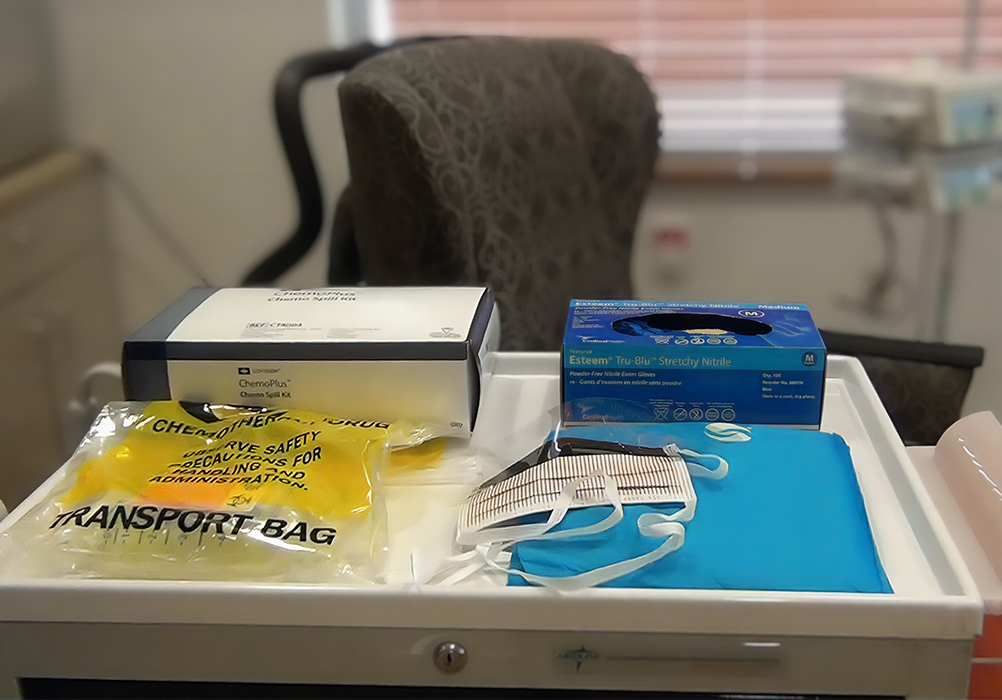One potential positive from the COVID-19 pandemic was heightened awareness and use of personal protective equipment (PPE). However, protecting people from virus transmission does not automatically equate to protecting surfaces from hazardous drugs, researchers reported in the August 2024 issue of the Clinical Journal of Oncology Nursing (CJON). Although surface contamination varied by agent and setting, overall, they found no significant change from pre- to post-pandemic.
The research team, which included ONS members AnnMarie Walton, PhD, MPH, RN, OCN®, CHES, FAAN, and Haesu Jin, MSN, RN, AGACNP-BC, BMTCN®, conducted the study on two adult hematology-oncology inpatient units at their organization. They surveyed nursing staff who worked on the units both before the pandemic (BP) and during the pandemic (DP) about their use of the following PPE items for chemotherapy administration, chemotherapy disposal, and contaminated excreta:
- Gloves labeled for use with chemotherapy
- Double gloves
- Gown labeled for use with chemotherapy
- Eye protection
- Respirator or mask
They also asked questions about:
- Knowledge about chemotherapy exposure
- Perceived risks of chemotherapy exposure
- Self-efficacy for using PPE
- Perceived barriers to using PPE
- Interpersonal influence regarding use and importance (e.g., peers’ use of PPE, supervisor encouragement)
- Perceived conflict of interest (e.g., having to choose between efficiency in patient care and PPE use)
- Workplace safety climate (e.g., PPE availability, managerial support, job hindrances, feedback and training, orderliness and cleanliness, conflict, or communication)
Overall, they found that nurses’ PPE use was significantly higher DP than BP when handling antineoplastic drug–contaminated excreta and that more nurses were using gloves labeled for use with chemotherapy, more than 75% of the time DP than BP. Nurses also reported a lower perceived risk of chemotherapy exposure DP than BP. Among the other factors influencing use, increased conflict of interest and perceived barriers were both linked to lower PPE use, whereas increased importance of personal influence was linked to higher PPE use.
The researchers then conducted a surface wipe analysis on each of the two units on two different days, BP and DP. They collected 68 samples from 18 surfaces in shared areas and 68 samples from 17 surfaces in 4 patient rooms after patients received cyclophosphamide, etoposide, or both, for a total of 136 surfaces (68 shared surfaces and 68 patient room samples).
They found that surface contamination was present and generally at similar levels for both BP and DP. Cyclophosphamide was detectable and quantifiable on 65% of surfaces DP and 62% BP, whereas etoposide was detectable and quantifiable on 27% of surfaces DP and 31% BP. More than 50% of shared areas and 70% of patient rooms had detectable and quantifiable levels of cyclophosphamide BP and DP.
What did differ between the two time points was surface contamination with etoposide: For shared surfaces, it was significantly higher DP than BP, whereas for patient rooms, it was significantly lower DP than BP.
“These results suggest that, in addition to PPE use, greater attention must be given to administrative controls (e.g., nurse–patient ratios, training) and engineering controls (e.g., closed-system transfer devices at the point of administration) to limit surface contamination with antineoplastic drugs,” the researchers concluded. “Effective administrative controls ensure adequate job training, retention, and staffing.”
Learn more about the findings by reading the full CJON article, then get a glimpse into the study approach and methods in the following video, where CJON Editor Joni Watson and primary author AnnMarie Walton delve deeper into the science behind the study.






